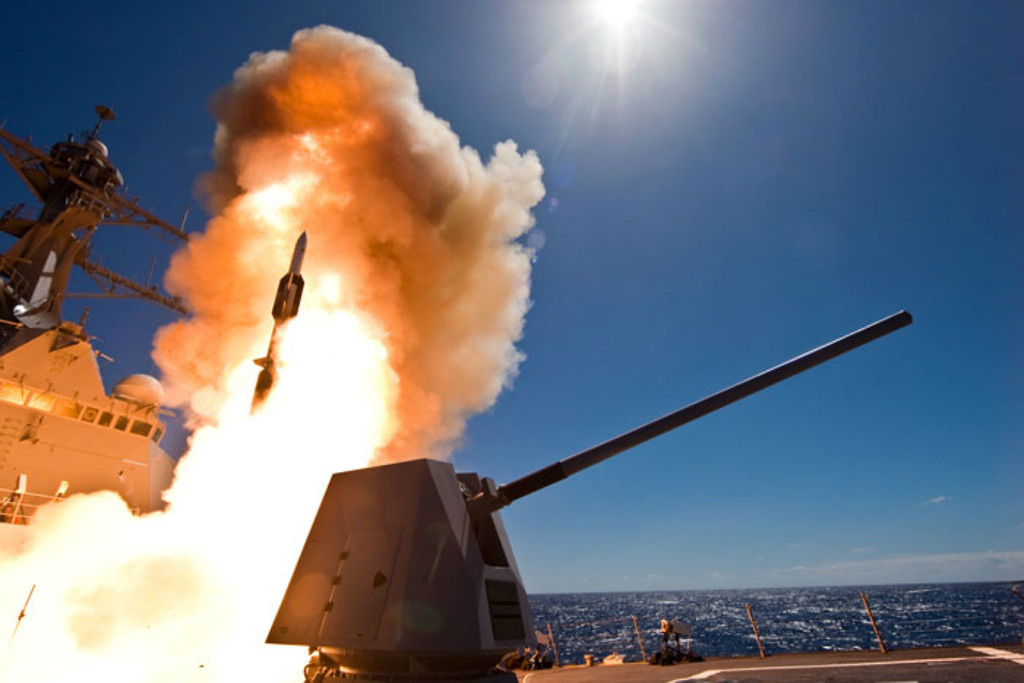The U.S. Navy’s Surface Force Just Got a Lot Deadlier

The U.S. Navy’s surface force has been working hard over the past year to bring its idea of “distributed lethality” to fruition. Jim Holmes wrote about it here on WOTR last year at this time, and his overview hinted at some of the promise that more lethal surface forces could deliver, along with some cautions about how that promise might be realized.
What is distributed lethality? It is a concept that holds that a greater number of individual surface ships should see their lethality increased as efficiently and opportunistically as possible, and that these more lethal ships should be operated in novel force packages operating independently from the main body of the battle fleet. This dispersal of combat power requires an adversary to account for many more targets, therein diluting available weapons assignment against any one platform while also stressing the adversary’s intelligence, surveillance, and reconnaissance (ISR). Simply put, a more lethal and distributed surface force gives an adversary a much more difficult operational problem with which to contend.
A week or so after Holmes wrote his piece, a Tomahawk Land Attack Missile (TLAM) was launched from a U.S. Navy destroyer and flew for hundreds of miles before impacting a target barge. This demonstration was a huge step forward for distributed lethality, in that a tried and tested land attack weapon was modified and repurposed into a subsonic, anti-surface warfare (ASuW) weapon. In doing so, the surface Navy’s ability to target and destroy adversary surface ships increased from a maximum range of approximately 75 miles (on the 50 or so cruisers and destroyers equipped with the Harpoon missile) to nearly 1,000 miles from all active cruisers and destroyers (some 90 or so ships). While the Harpoon has a special canister launcher on ships so-equipped, many destroyers (all built since 2000) are not Harpoon-capable. However, all cruisers and destroyers have the Vertical Launch System (VLS), enabling them to fire the TLAM missile, meaning that all 90 of those ships would gain the capability of targeting and attacking adversary surface platforms to the maximum range of the missile.
Yesterday, another critically important capability was announced, this time by Secretary of Defense Ash Carter himself during a press availability after a ship visit on the San Diego waterfront. Carter revealed the heretofore highly classified fact that the long-range, supersonic “SM-6” missile designed to counter air, cruise missile and ballistic missile targets — also capable of being fired from the VLS-equipped cruisers and destroyers — has been modified so that it too can be fired against surface combatants.
What this means is that in the space of a year, the Navy’s surface force, which many (including me) had believed was becoming “outsticked” by adversary surface forces, has gone from 50 ships capable of firing missiles out to 75 miles, to 90 ships capable of firing a subsonic anti-ship missile to nearly a thousand miles, in addition to a devastating supersonic missile to ranges in excess of the Harpoon missile (the SM-6’s range remains classified). Add to this the Navy’s plan to “upgun” the Littoral Combat Ship with medium-range surface-to-surface missiles, and we see that the promise of distributed lethality — as evaluated by Jim Holmes right here at WOTR last year — is beginning to be realized.
So while the Navy will build fewer ships than it had hoped, significant resources are being devoted to increasing the lethality of the ones it already has or is building. Increasing surface force lethality increases the effectiveness or our nation’s most important conventional deterrence platforms. The modest investments necessary to do so equip the surface force to more effectively fight in high-end environments, but equally as important, they present adversaries with powerful incentives not to commit aggression in the first place.
I remain convinced that the nation needs both more ships (and submarines and aircraft) and more lethal ships, but the steps the Department of Defense is taking to bring about this considerable increase in combat power is laudable.
Faster, please.
Bryan McGrath is the Managing Director of The FerryBridge Group and Hudson Institute’s Center for American Seapower.
Photo credit: USS DEWEY DDG 105 Public Affairs

